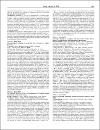Calmodulin Mutations Associated with Congenital Cardiac Disease Display Novel Biophysical and Biochemical Characteristics
| المؤلف | Nomikos, Michail |
| المؤلف | Thanassoulas, Angelos |
| المؤلف | L. Calver, Brian |
| المؤلف | Beck, Konrad |
| المؤلف | Vassilakopoulou, Vyronia |
| المؤلف | Buntwal, Luke |
| المؤلف | Konotgianni, Iris |
| المؤلف | Smith, Adrian |
| المؤلف | Safieh-Garabedian, Bared |
| المؤلف | Livaniou, Evangelia |
| المؤلف | Steen Toft, Egon |
| المؤلف | Nounesis, George |
| تاريخ الإتاحة | 2021-10-17T09:05:16Z |
| تاريخ النشر | 2018-02 |
| اسم المنشور | Biophysical Journal |
| المعرّف | http://dx.doi.org/10.1016/j.bpj.2017.11.2575 |
| الملخص | Calmodulin (CaM) is a cytoplasmic multifunctional calcium (Ca2+)-binding messenger that interacts with the cardiac ryanodine receptor (RyR2), a large transmembrane Ca2+ channel that mediates Ca2+ release from the sarcoplasmic reticulum (SR) to activate cardiac muscle contraction. Recent genetic studies have reported CaM missense mutations in patients with a history of severe cardiac arrhythmogenic disorders. Herein, we have investigated the effect of four novel missense CaM mutations, identified in two patients presenting with long QT syndrome (LQTS) (N98I, D134H), and two patients with clinical features of both LQTS and catecholaminergic polymorphic ventricular tachycardia (CPVT), (D132E and Q136P), relative to the biophysical and biochemical properties of wild type CaM (CaMWT). We used CD spectroscopy to examine the thermal stability of CaMWT and mutant proteins. In the absence of Ca2+, thermodynamic values for all proteins were similar. In contrast, in the presence of Ca2+, there was a significant decrease in the stability of the five proteins following the order CaMWT> CaMN98I > CaMD132E > CaMQ136P > CaMD134H. Further Ca2+-binding studies revealed that all CaM mutations significantly reduce the Ca2+-binding affinity of CaMWT. CaMQ136P protein exhibited a ∼7-fold reduced Ca2+-binding affinity compared to CaMWT, while CaMD132E had a ∼14-fold reduction. Furthermore, biochemical analysis revealed that all four CaM mutants displayed dramatically reduced RyR2 interaction and defective modulation of [3H]ryanodine binding to RyR2, regardless of LQTS or CPVT association. Our findings confirm our previous observations suggesting that the clinical presentation of LQTS or CPVT associated with these four CaM mutations may involve both altered intrinsic Ca2+-binding as well as dysregulation of RyR2-mediated Ca2+ release via aberrant interaction of CaM with RyR2. |
| اللغة | en |
| الناشر | Elsevier |
| الموضوع | Disease biochemical |
| النوع | Article |
| الصفحات | Page 467a |
| رقم العدد | 3 |
| رقم المجلد | 114 |
تحقق من خيارات الوصول
الملفات في هذه التسجيلة
هذه التسجيلة تظهر في المجموعات التالية
-
أبحاث الطب [1518 items ]



